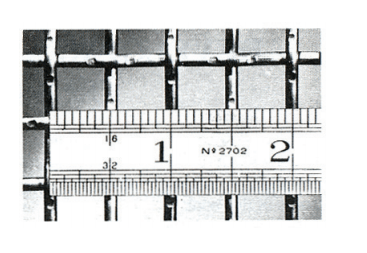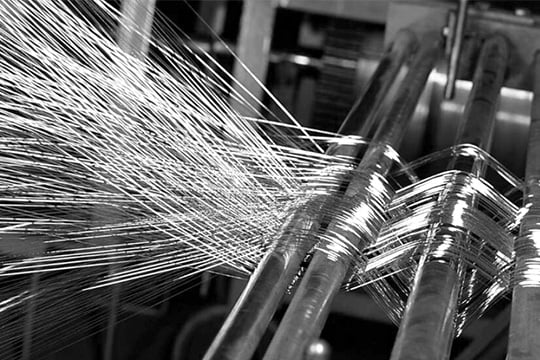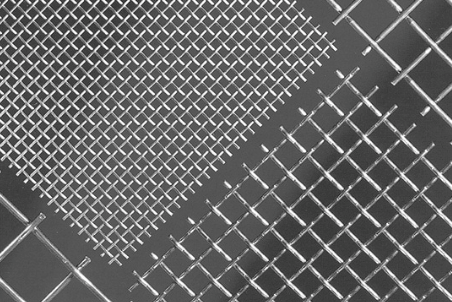Molded Pulp Fiber Mesh Specifications: Mesh Count
As companies all over the globe turn to more eco-friendly solutions, odds are you have come across molded pulp and fiber. Whether it be the to-go boxes you received after dining out or the packaging from your newest electronic purchase, we are seeing pulp and fiber products become the new normal.
Now, while the process to mold pulp and fiber goods is relatively the same throughout the industry, the quality of these products varies based on several factors. For those who are interested in using woven wire mesh screens, the mesh count used is one of the more notable factors.
So, what role does mesh count play in the overall quality of molded pulp and fiber products?
W.S. Tyler has helped customers weave woven wire mesh into their process for over 140 and, in this particular case, are here to help you understand the impact mesh specifications can have on the quality of pulp and fiber goods.
To help you identify a mesh count that suits the needs of you and your customers, the following article will cover:
- The role woven wire mesh has in the pulp and fiber industry
- The mesh counts typically used in the pulp and fiber industry
- The mesh count(s) you should be using
- How mesh count affects the overall cost of your woven wire mesh
How Does Woven Wire Mesh Benefit the Molded Pulp and Fiber Industry?
To form molded pulp and fiber products, a slurry of paper, various fiber, and warm water are used as the foundation. The fibers are typically small fragments of sugarcane, straw, bamboo, or other resources.
Once the slurry is formed, it is transferred to the production line, where metallic dies lined with woven wire mesh are dipped into the slurry. A combination of vacuum pressure and heat is then introduced to force water through the pore opening of the mesh, leaving only the formed pulp and fiber.
By using mesh, manufacturers can guarantee a certain quality in their product as it helps evenly distribute heat and pressure to increase consistency.
To learn more about why manufacturers choose woven wire mesh over other screening media, read the following article:
What Mesh Counts Are Used in the Molded Pulp and Fiber Industry?
50 mesh and 24 mesh are the two prominent mesh counts used by molded pulp and fiber manufacturers. Most industry standards use these mesh counts in multi-layer pieces for added durability and quality control.

The Importance of Mesh Count
Mesh count is best defined as the amount of pore openings in a linear inch. By knowing how many openings are in your wire mesh, you give yourself more control over what passes through the mesh.
In regards to molded pulp and fiber, this means you can accurately extrude all the water from the slurry, retain the cake of fibers, and create a perfectly molded product.
Now to that end, by implementing a mesh count that is too small, you run the risk of hindering the efficiency of your machinery and operation. Implement a mesh count that is too large, and you won't be able to retain an adequate amount of fibers, causing lower quality or even faulty molds.
What Mesh Count Should I Use?
While 50 mesh and 24 mesh molded screens are generally used, it is important to know that the mesh count you use should be based on two factors: the fibers in your slurry and the quality you are trying to achieve. A good rule of thumb to follow is the smaller the mesh count, the smoother and higher-quality the final mold.
This means if you are forming a product in which quality and aesthetics matter, you should experiment with higher mesh counts. On the other hand, if you are forming products, such as packaging, that are meant for function, not form, lower mesh counts should be used.
How Does Mesh Count Affect Cost?
We've established that the mesh count of your molded pulp and fiber screen controls water flow and fiber retention. But it's important to understand that the mesh count you choose affects the cost of the mesh, giving you even more reason to determine the exact mesh count needed.

In regards to the mesh count's effect on cost, the higher the mesh count, the more expensive it will be. This is because finer mesh specifications require more labor and time to set up the weaving loom.
Improve the Efficiency of Your Mesh With the Right Alloy
When using woven wire mesh to mold pulp and fiber, the mesh count you implement plays a more significant role than you may think. It has an impact on both the overall quality of the end product and the cost of your mesh.
For the best outcome, it is imperative that you calculate the exact mesh count you need to achieve the results you and, more importantly, your customers seek.
Now, while mesh count is possibly the most important mesh specification involved in the production of molded pulp and fiber, you shouldn't let it overshadow the importance of other specifications such as alloy. In fact, the alloy you use plays an integral role in the durability and longevity of your mesh.
Here at W.S. Tyler, we understand that determining which wire mesh speciations work best for your operation can be daunting. To help, we strive to leverage our 140 years of woven wire mesh to help you overcome these obstacles and give you peace of mind about the mesh you invest in.
Read the following article to get more insight into what alloys you should consider having your mesh construed from:
About Ronnie Brown
Ronnie is the Content Writer for W.S. Tyler and has four years of experience as a professional writer. He strives to expand his knowledge on all things particle analysis and woven wire mesh to leverage his exceptional writing and graphic design skills, creating a one-of-a-kind experience for customers.




